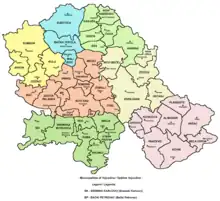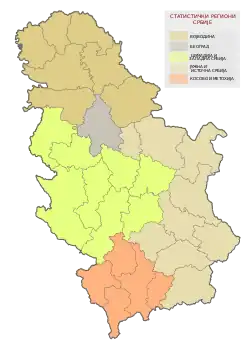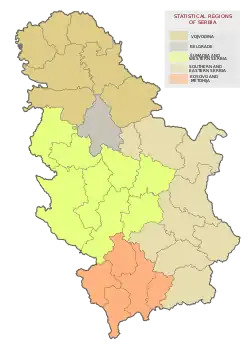Sečanj
| |
|---|---|
Town and municipality | |
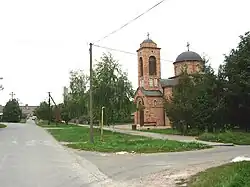 The new Orthodox Church | |
 Coat of arms | |
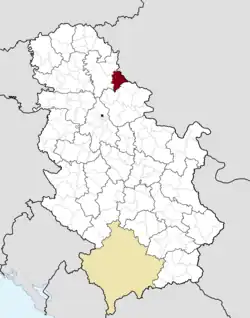 Location of Sečanj within Serbia | |
| Coordinates: 45°22′00″N 20°46′21″E / 45.36667°N 20.77250°E | |
| Country | |
| Province | |
| District | Central Banat |
| Government | |
| • Mayor | Predrag Rađenović (SNS) |
| Area | |
| • Total | 523 km2 (201.9 sq mi) |
| Elevation | 77 m (253 ft) |
| Population (2011) | |
| • borough | 2,373 |
| • Municipality | 13,267 |
| Time zone | UTC+1 (CET) |
| • Summer (DST) | UTC+2 (CEST) |
| Postal code | 23240 |
| Area code | +381(0)23 |
| Car plates | ZR |
Sečanj (Serbian Cyrillic: Сечањ, Hungarian: Torontálszécsány) is a town located in the Central Banat District of the autonomous province of Vojvodina, Serbia. The town itself has a population of 2,373, while the Sečanj municipality has 13,267 inhabitants.
Name
"Sečanj" is a Slavic name for the first month in the calendar year. The Serbian Ekavian variant of this name was eventually replaced with the Latin-derived "Januar", while the Croatian Ijekavian variant "Siječanj" remains in use in Croatia.
In Serbian and Croatian, the town is known as Sečanj (Сечањ), in Hungarian as Szécsány or Torontálszécsány, in German as Setschan or Petersheim, and in Romanian as Seceani.
Serbian, Hungarian, and Romanian language are officially used by municipal authorities.
Demographics
| Year | Pop. | ±% p.a. |
|---|---|---|
| 1948 | 25,684 | — |
| 1953 | 26,110 | +0.33% |
| 1961 | 25,519 | −0.29% |
| 1971 | 21,938 | −1.50% |
| 1981 | 19,501 | −1.17% |
| 1991 | 18,438 | −0.56% |
| 2002 | 16,377 | −1.07% |
| 2011 | 13,267 | −2.31% |
| Source: [1] | ||
According to the 2011 census, the population of the municipality of Sečanj was 13,267 inhabitants.
Ethnic composition
The settlements with Serb ethnic majority are: Sečanj, Banatska Dubica, Boka, Jarkovac, Jaša Tomić, Krajišnik, and Sutjeska. The settlement with Hungarian ethnic majority is Busenje. Ethnically mixed settlements with relative Serb majority are: Konak, Neuzina and Šurjan.
| Ethnic group | Population 2011[2] |
% |
|---|---|---|
| Serbs | 9,165 | 69.08% |
| Hungarians | 1,691 | 12.75% |
| Romani | 714 | 5.38% |
| Romanians | 566 | 4.27% |
| Croats | 113 | 0.85% |
| Bulgarians | 87 | 0.66% |
| Slovaks | 52 | 0.39% |
| Yugoslavs | 50 | 0.38% |
| Macedonians | 39 | 0.29% |
| Germans | 39 | 0.29% |
| Montenegrins | 24 | 0.18% |
| Others | 727 | 5.48% |
| Total | 13,267 |
Inhabited places
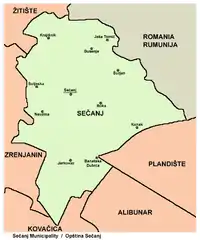
The Sečanj municipality includes also the following villages:
- Jaša Tomić
- Banatska Dubica
- Boka
- Busenje (Hungarian: Káptalanfalva)
- Jarkovac
- Konak
- Krajišnik
- Neuzina
- Sutjeska
- Šurjan
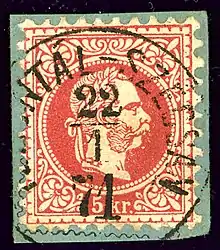
Twin towns – sister cities
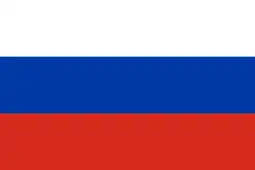 Azov, Russia (2018)
Azov, Russia (2018)
See also
References
- ↑ "2011 Census of Population, Households and Dwellings in the Republic of Serbia" (PDF). stat.gov.rs. Statistical Office of the Republic of Serbia. Retrieved 19 March 2017.
- ↑ "Попис становништва, домаћинстава и станова 2011. у Републици Србији" (PDF). stat.gov.rs. Republički zavod za statistiku. Retrieved 28 December 2016.
